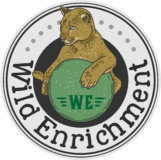For this article, I have decided to go in-depth into what I think a great enrichment program for zoos and aquariums should look like. Ever since I became fascinated with animal enrichment I have been experimenting with a variety of techniques and devices and have thought a lot about what I think works best for a wide range of animals. This information is backed by science and is structured in such a way that it can be applied to large zoos and aquariums as well as smaller institutions and scenarios such as wildlife rehabs, hobby farms and even your home. One of the main takeaways from this article is that all captive animals require enrichment regardless of their circumstances. Some of the basics we will go over in this article are; the fundamentals of environmental enrichment and why it’s important, how to go about enriching an animal and evaluate that enrichment, the basics of contrafreeloading, and how to design a world-class enrichment program.
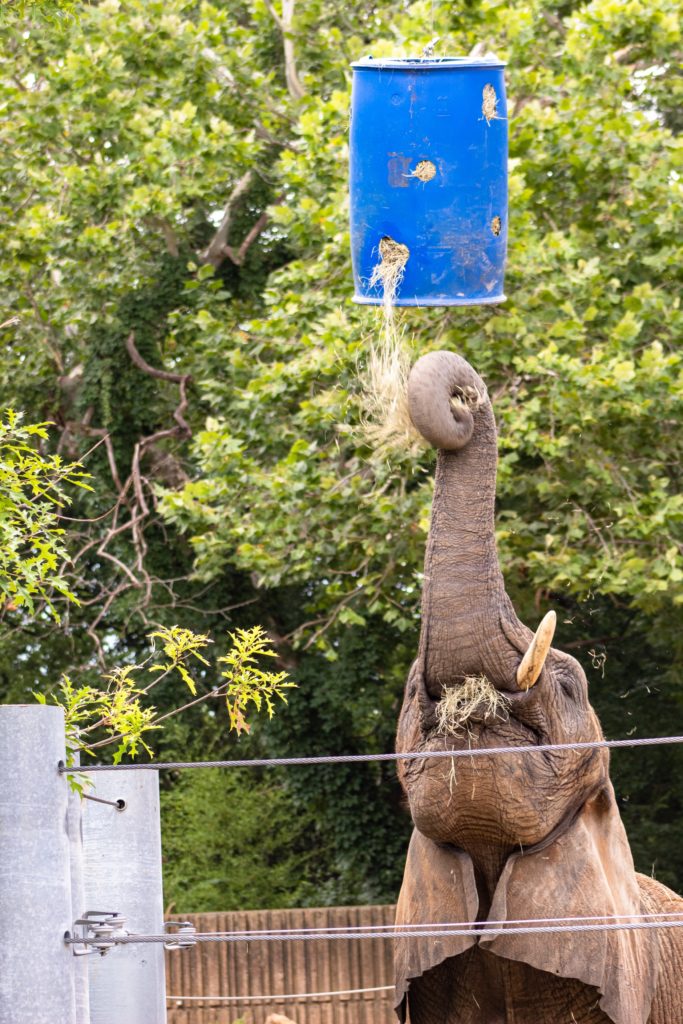
The Challenges of keeping Animals in Captivity
Anyone who has ever had the privilege to work with animals in a zoo or other institution knows the challenges that come with keeping them in captivity. One of the major challenges is one that comes from the stress/ boredom that results from a closed environment, this can result in various stereotypic behaviours and other potentially harmful activities. If left unchecked these negative behaviours can result in serious welfare concerns for the animal in question. But luckily zoos and aquariums have been around a long time and with the help of modern science and extensive research, we can combat many of these negative impacts of captivity. One of the main things a facility can do to combat boredom and stereotypic behaviours is by implementing an environmental enrichment/ b
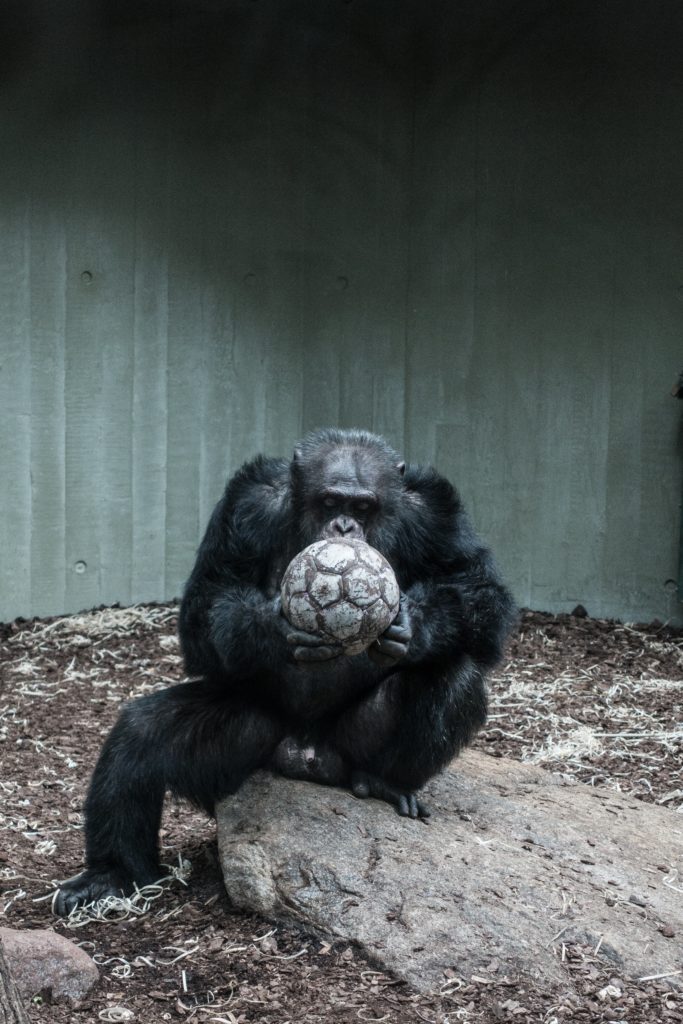
A Note on the Word “Captivity”
Since this article is talking about enrichment for animals in a zoo/aquarium setting, I’ll be using the word “captivity” a lot. This word has a lot of negative connotation behind it and doesn’t really lend itself well to an article that is talking about captive animal welfare and ways in which to improve it. When you read the word “captivity” in this article please try to avoid thinking about animals living in cages surrounded by bars, because that is not at all what I mean by that word. The word “captivity” in this context could be applied to your dog at home, it’s being kept in “captivity” but is in no way a “captive.” It is loved and cared for and surrounded by humans that would do anything to make its life better, this same thing applies to captive zoo animals that we are talking about in this article. The whole purpose of this article is to begin a conversation about environmental enrichment that is designed to improve the lives of animals in captivity and I don’t want one word to muddy the waters in an attempt to do so. Back to your regularly scheduled article.
What is Environmental Enrichment?
Fundamentally environmental e
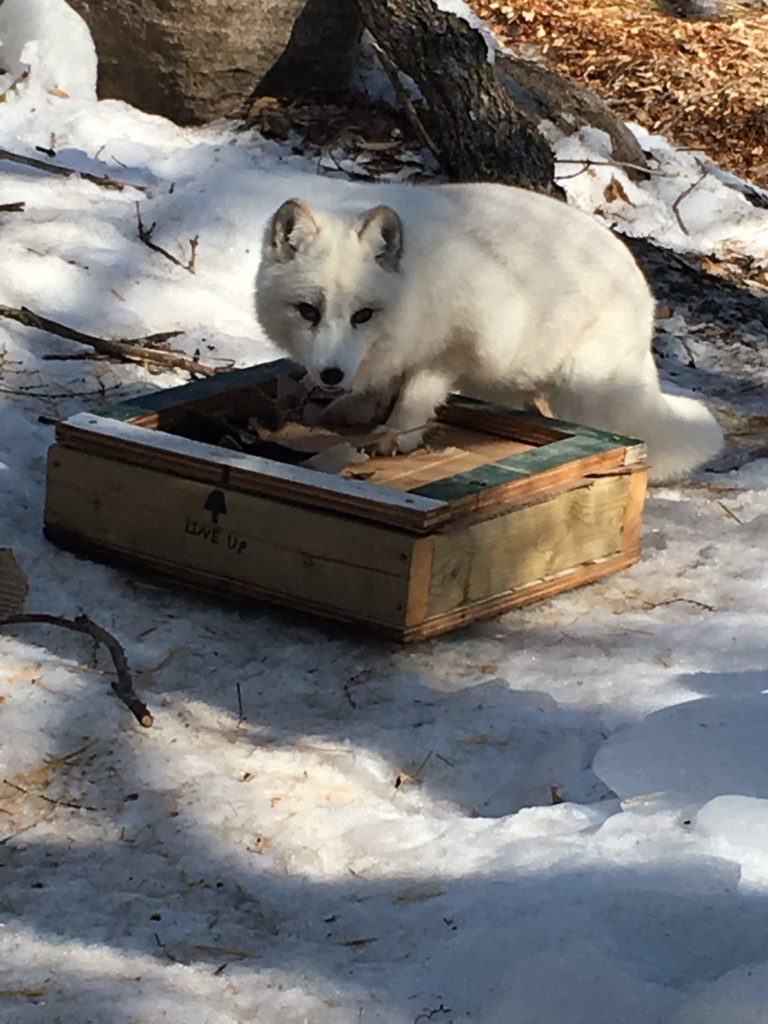
Why is Environmental Enrichment Important?
The key reason that environmental enrichment is important to implement in the lives of captive animals is that captivity lacks a lot of the challenges and opportunities for a challenge that the wild may present an animal. Not all of these challenges are good things, they can include starvation, disease, and even the constant threat of predation. There are also things like roaming through vast migration routes, hunting and foraging, and a vast amount of
How to Enrich an animal
Well, we have talked about how behavioural husbandry/ environmental enrichment can be extremely beneficial to a captive animals life, but how should you go about enriching an animal, or a zoo full of animals? Below I talk about a few of the things that I believe are the most important concepts to think about when enriching an animal; Natural History, Variety, Variation and Evaluation.
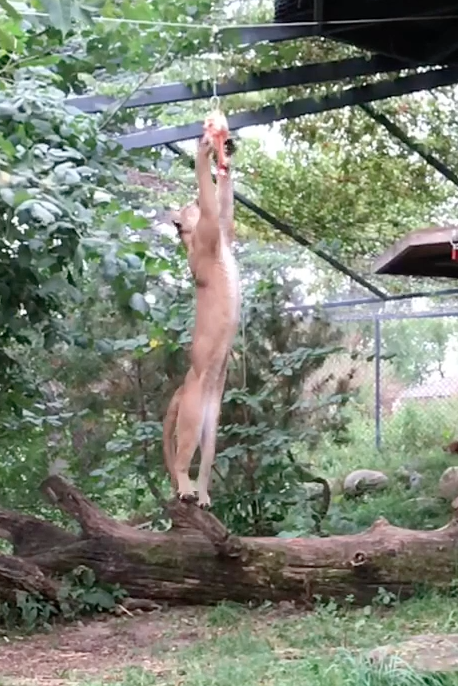
Natural History
If you give a penguin a deer leg hanging from a zip line, they are going to look at you like you’re crazy, but if you give the same to a tiger, they are going to use their incredible jumping ability to get the leg, this is where natural history comes into play. Natural History is the most important factor to consider when trying to decide on what enrichment to give a particular species. Studying an animal’s natural history allows you to understand the species natural behaviours that you may wish to try to recreate with their enrichment program. Natural Behaviours should always form the backbone of any enrichment program due to the fact that these behaviours are ones that should come incredibly easily to the animal and will be very easy to replicate day after day. These enrichment items that bring out natural behaviours are “sure-fire” and are generally easy to set up and execute day-to-day. Examples of this can include giving barrels with food inside to grizzly bears in order to try to get them to demonstrate their natural “pouncing” behaviour to get the food out.
Variety
Another important thing to think about when it comes to enrichment is that captive animals need a tremendous amount of variety in their daily lives in order for their behavioural enrichment program to be successful. Even the most fun and inventive enrichment can become predictable and boring for an animal, and we know that predictability can be very detrimental to captive animals wellbeing. When an animal is used to being fed in a particular spot in a particular way (i.e. piles near the shift door, or in a hay bag) any slight change in their normal routine is going to throw them off and could be considered enriching. Variety comes in many forms, feeding at different times, feeding in different ways, getting new enrichment items, moving exhibit furniture around, even changing the colour of your uniform can throw off certain animals. Variety applies to enrichment items as well, we are all guilty of falling into a rut with enrichment, putting the same five things out in a rotation day after day. Beginning to think about a variety of enrichment and not just the fact that enrichment was offered allows an enrichment program to become emmensly effective in the long term.
Variation
Everyone that has had the pleasure of working with a variety of animals knows that there is a great deal of variation in behaviour between individuals of the same species. You may work with one Preswalskis Horse that loves to roll barrels full of pellets around and another that thinks hay bags are the greatest things ever. Accounting for this variation is extremely important to have success enriching a variety of animals, some just prefer to do one natural behaviour over another. Just giving a Giraffe enrichment that another Giraffe loved does not guarantee its success. Each animal’s individual needs and unique
Evaluating and Monitoring Enrichment
Continued evaluation and monitoring an environmental enrichment program is one of the most neglected but most important parts of any successful program. As I stated previously, predictability and routine can be very detrimental to an animal in captivity and this is especially true when trying to keep enrichment items enriching. Nothing is going to be better than the first time you give a squirrel monkey a great puzzle box, they are going to spend 30 minutes figuring out the feeder. However, if you give that puzzle feeder to them once a week for the next 3 months it might only take them 30 seconds to get the food inside instead of 30 minutes. This is where evaluation and monitoring the enrichment comes in. Enrichment given to an animal needs to be monitored on a
Check out Our Services and see what Wild Enrichment can do for you!
Contrafreeloading
Contrafreeloading is in my opinion, one of the most important concepts one can learn and understand when designing an enrichment program for animals within a zoological institution.
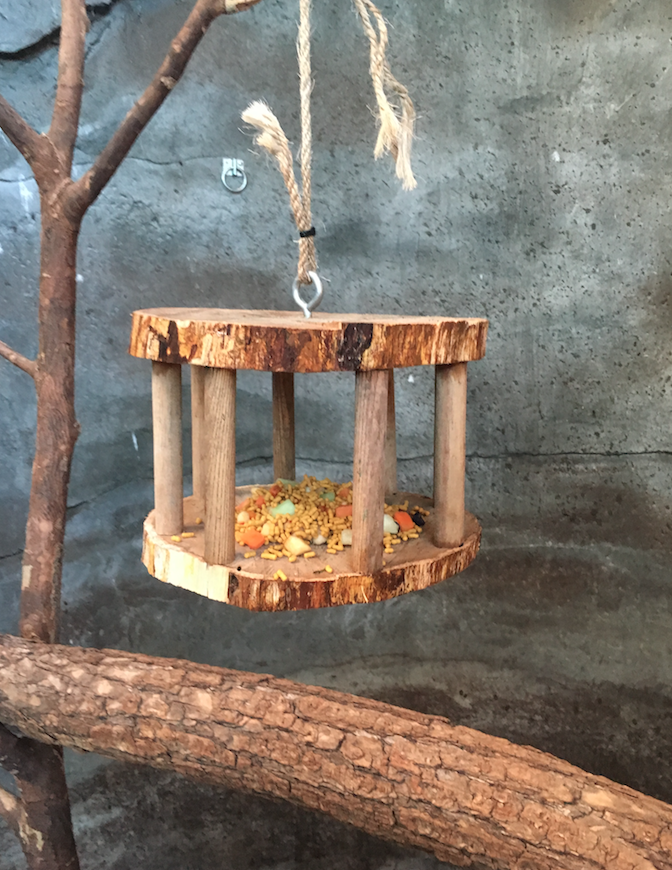
What is Contrafreeloading?
Essentially, Contrafreeloading is a behaviour displayed by captive animals where they choose food that requires work to obtain rather than “free” food when given the choice between the two. This term was initially coined by the phycologist Glen Jensen in 1966, he discovered it by offering 200 captive rats the option between “free” food or food that they would only get from pressing a bar. He found that all but one rat decided to press the bar for food rather then get if for free from the dish on the ground. This concept completely blew my mind when I first learned about it and fundamentally changed the way I look at enrichment as a whole. In knowing that animals prefer to “work” for their food you can assume that the act of foraging/ searching for food is more than just something done to obtain food, it’s a
Why is Contrafreeloading Valuable?
In my experience, the most common enrichment given to captive animals is generally inanimate tactile enrichment and olfactory enrichment, and while these are extremely valuable to an enrichment program, a program consisting of little to no opportunities for an animal to forage is not going to be emulating its natural day to day life. Let’s take a squirrel monkey for example who in the wild spend more than half of their day hunting for insects and finding food. In a zoo, most squirrel monkeys are going to be fed in a simple puzzle feeder or maybe with a scatter feed, this is going to result in a foraging time that is significantly less than its wild counterpart. An enrichment program that is heavily focused on contrafreeloading style enrichment items (ones that promote foraging) can more closely mimic the time spent foraging in the wild. The concept of contrafreeloading can be applied not just to the enrichment items in an enrichment program but also by doing things like multiple feedings a day and working toward captive foraging times that are closer to the animal in the wild.
How to Implement Contrafreeloading into your Environmental Enrichment Program
The best way to begin implementing contra freeloading into an enrichment program is by starting to eliminate the total percentage of daily diet an animal gets for “free”. It’s important to keep in mind that animals that have been fed one way in a certain spot for a decade are not going to immediately take to a diet that is 0% “free” food. For example, if you have a young grizzly bear you may want to start them at 25-50% free food and get them to work for the rest, whereas if you have an older cougar that has only been fed in piles its whole life you may want to start them with 80-90% free food to avoid the risk of them not getting their diet. Once the animal is easily getting all the food that is not free you can continue to decrease the amount of free food until they have to work for all of it. Some good behaviours to look for when doing this

Designing an Enrichment Program
Now that we have gone over the major concepts of an enrichment program, it’s time to do the important job of bringing them all together to make a great enrichment program.
Dividing Animals and Goal Setting
One of the most important steps in designing an enrichment program for a large institution such as a zoo or aquarium is the process of dividing up the animals in the collection into groups and setting goals for each group. When it comes to environmental enrichment needs, not all animals have the same requirements in order to be properly enriched and that is why I think dividing up animals based on priority/ enrichment needs is crucial to have success throughout a large collection. A sample grouping may look something like this:
- Group 1: Very High Priority
- Carnivora
- Primates
- Animals with established stereotypes
- Group 2: High Priority
- High Activity Birds (I.e. Psittaciformes, Picocoraciae)
- High Activity Mammals (I.e. Proboscidea and some Ungulates)
- Animals starting to show signs of forming stereotypes
- Group 3: Medium Priority
- Ungulates and all other Mammals
- Birds
- Group 4: Lower Priority
- Reptiles
- Amphibians
I created this list based on how much time the animals within the group are spending foraging, hunting and socializing as well as their risk of developing stereotypes, this generally determines their probability of reacting to environmental enrichment. I almost always put Carnivora in group one as they have an extremely high prey drive that needs to be mimicked in captivity. Joining Carnivora at the top of the list is Primates and this is due to their high levels of social and foraging behaviour as well as their extreme levels of intelligence. Next on the list is high activity birds and high activity mammals, this should include animals that are very intelligent, social and active that would respond well to enrichment. Going down the list, Ungulates and other mammals and birds that weren’t in the “high activity” category. Finally, reptiles are generally at the bottom of the priority list due to the fact that they rarely respond well to enrichment. This list is not at all a one size fits all list, it may vary widely depending on the specific animals that are in the collection and priorities that you may see day to day.
Goal Setting
Once you have a list like the one above you can really begin to set tangible and prioritized goals based on groups of animals that are going to benefit the most from the effort put into their enrichment. In order to properly goal set, the concepts of Variety, Variation, Natural History and Evaluation need to be applied to every enrichment program for each animal to first determine what is enriching in the first place. Specific goals need to be set for each group specified above, for example:
- Group 1: Very High Priority
- One new enrichment item a week
- Multiple enrichment sessions a day
- At least 7 days between repeating enrichment
- Variations on environment daily
- Staggered feeding times/ multiple feedings a day
- 0% free food
- Group 2: High Priority
- One new enrichment item every other week
- Multiple enrichment sessions a day
- At least 5 days between repeating enrichment
- Variations on environment every other day
- Staggered feeding times/ multiple feedings a day
- 0% free food
- Group 3: Medium Priority
- One new enrichment item a month
- At least three enrichment sessions a week
- At least 3 days between repeating enrichment
- Monthly environment changes
- 50% maximum free food
- Group 4: Lower Priority
- One new enrichment item a month
- At least one enrichment session a week
- Monthly environment changes
As you can see it’s a lot easier to set goals and “rules” for each group when they are broken into groups, this will allow you to allocate your resources appropriately to where they are really needed.
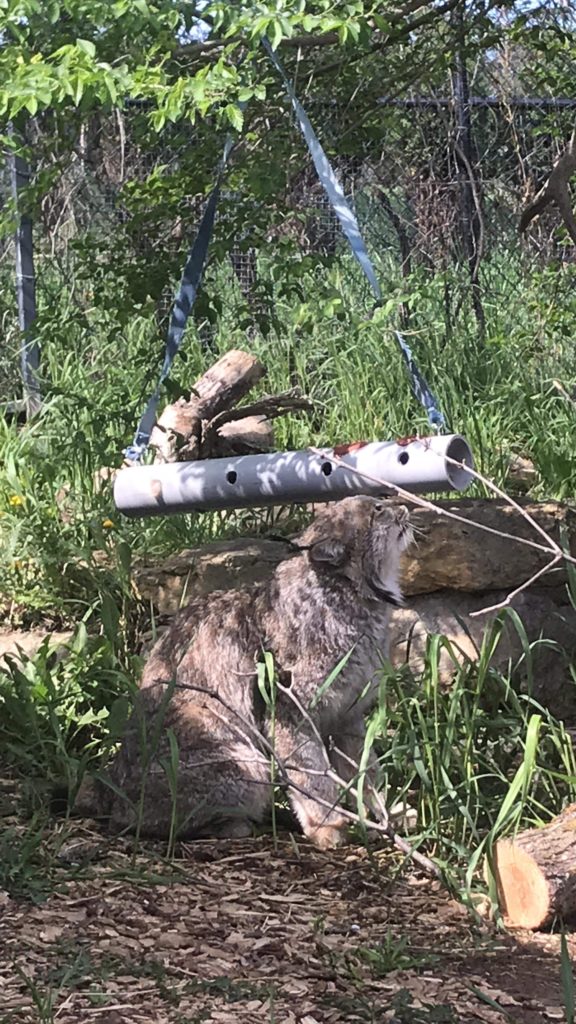
“Training” Animals to be Enriched
Another thing to consider when designing an enrichment program is not leaving an animal out because it hasn’t reacted to enrichment in the past. This is generally because the animal hasn’t had many enrichment opportunities in the past or is stuck in a day to day routine by being fed in the same way/ same spot for years. Some animals need to be “trained” to be enriched, similar to what we talked about earlier with starting contrafreeloading, enrichment needs to be approached the same way. For example, if you’re trying to get a large cat to jump and grab its food from a zip line, you may need to start by hanging it a few feet off the ground and over the course of a few weeks raise it higher and higher. Do not make the mistake of not giving an animal enrichment because it does not react to it initially, approach it like training a behaviour and start small, you’ll be surprised of what you can accomplish.
Logistics
Unfortunately with all of the concepts above, comes a certain level of paperwork/ tracking to ensure enrichment is being rotated correctly as well as a variety of enrichment is being offered. A grading system should also be implemented into this tracking to assure a standard of engagement is kept up. I have included examples of what I would use to track enrichment under the “resources” section that are available for download as well as viewing.
Enrichment is for everyone!
Based on the above information it is clear that environmental enrichment programs at zoos, aquariums and other animal care facilities are of vital importance to an animals long term success and well being. Simulating a captive animals natural environment is easier said than done and takes many concepts and a lot of work to be successful. I think the most important take away from this article should be that enrichment is necessary for every animal and can’t just be a side topic when it comes to animal husbandry, it needs to be at the forefront of animal welfare discussions and taken very seriously. Enrichment can be a lot of fun and the feeling you get from making an animals day with some enrichment you put together is like no other, so go out there, have fun, and make some animals happy.
Resources
Daily Tracking and Yearly Planning/ Overview
https://docs.google.com/spreadsheets/d/1QZloFYw1q5pwaPwzlNmUXKbxTaF2dMXhJtF0RBsSJKs/edit?usp=sharing
S.P.I.D.E.R Framework
The S.P.I.D.E.R Framework for enrichment is a great tool for designing and implementing new enrichment for a given species and involves many of the concepts that we have talked about in this article. Check it out on Disneys Enrichment Website HERE.
Further Reading
A dynamic approach to the study of environmental enrichment and animal welfare.
Effects of predictability on the welfare of captive
Environmental Enrichment for Zoo bears
Alleviating stress in zoo animals with environmental enrichment
Philosophy of Environmental Enrichment: Past, Present, and Future
Contrafreeloading in Grizzly Bears: Implications for captive foraging enrichment
Check out Our Services and see what Wild Enrichment can do for you!
